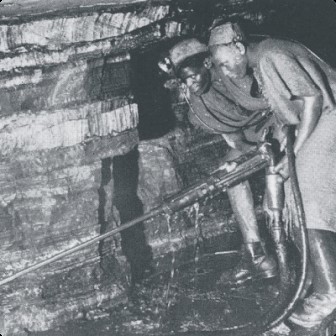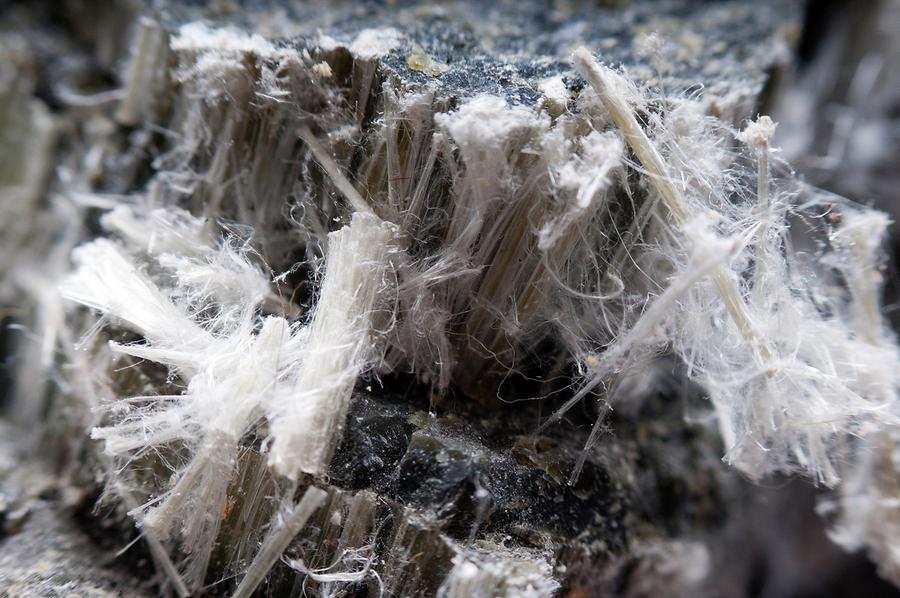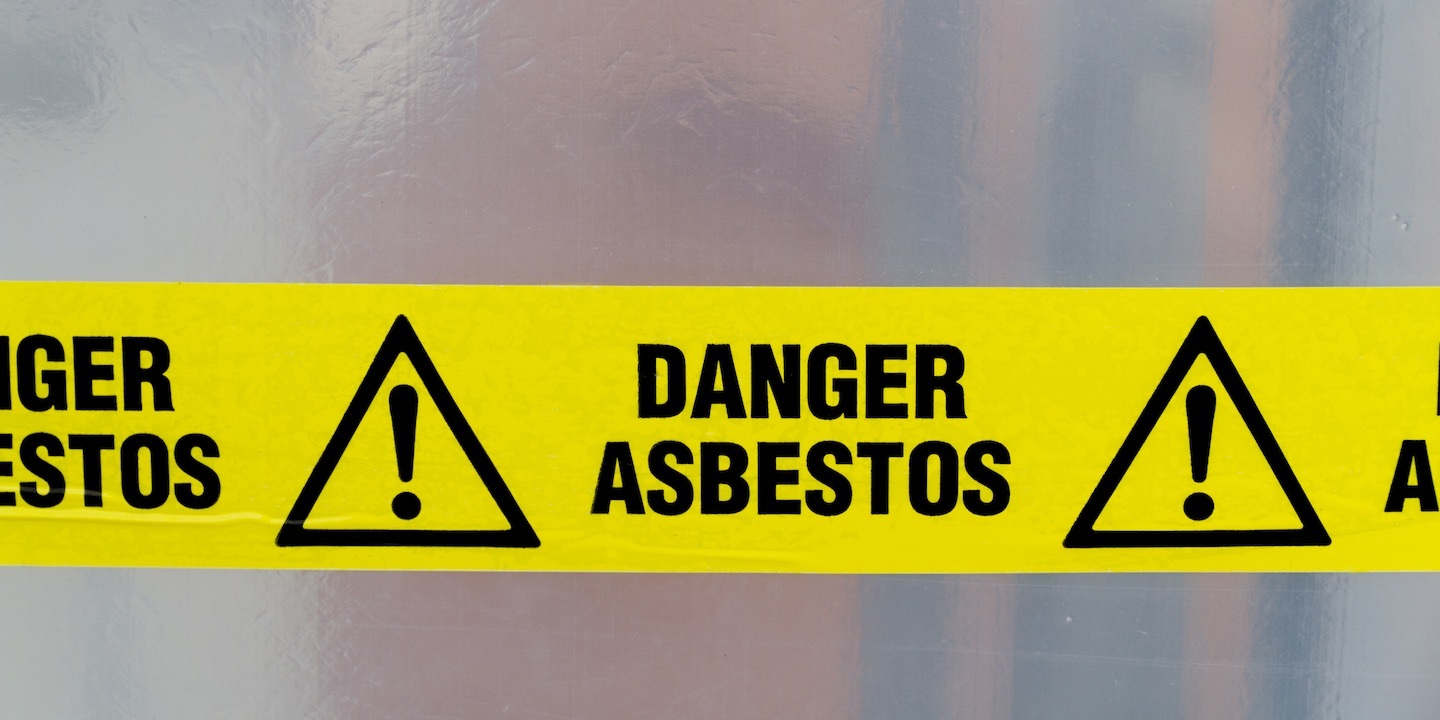Mike Kennard (former trade union heath and safety rep) examines an appalling threat to health and safety (see sources at end of article)
In Britain in 2020 there were 2,544 deaths from mesothelioma, a cancer of the lining of the lungs exclusively caused by exposure to asbestos. A diagnosis of mesothelioma is essentially a death sentence, with recorded mortality of 94 per cent.
Asbestos is found in every continent and its properties of resistance to chemicals, heat, water and electricity have been known for millennia – its fibres were used as lamp wicks as long ago as 4000 BC and were woven into funeral shrouds by the Egyptians and Greeks. In Scandinavia asbestos was incorporated into clay to make cooking pots, dating back to 2500 BC. Even in Greek and Roman times, lung disease in miners was noted.
There are 2 basic types of asbestos – amphibole and serpentine. Serpentine, or white, asbestos is less harmful than amphibole but all are carcinogenic. The commercial exploitation of asbestos exploded in the late 19th century with the growth of the industrial revolution. Crocidolite, one of the most harmful types, has been extensively mined in South Africa since the early 19th century, but commercial expansion really began in the 1850s and 1860s.

Henry Ward Johns in 1858 founded the H.W. Johns Manufacturing Company in Lower Manhattan when he was 21, manufacturing and selling roofing materials. He died, 40 years later, of lung failure! Major manufacturing plants were established in Europe, including in Britain, and asbestos mining expanded in Southern Africa, Russia, the USA and Australia. Over the next decades its use grew in manufacturing and construction, including brake and clutch linings, fireproofing, plaster, tiles and sheet materials.
Thousands of products
World output of asbestos reached over 30,000 by the mid-1900s. Use continued to grow, reaching over 100,000 tons by WW2. Asbestos was used to line the hulls of submarines and even the filters of gas masks. World demand for asbestos peaked around 1977, with 25 countries producing almost 4.8 million tons, and 85 countries producing thousands of asbestos products. The biggest consumer was the USA, at over 800,000 tons.
The adverse health effect noted by Greek and Roman writers did not go unnoticed. In 1897, an Austrian doctor considered that the respiratory problems of an asbestos worker were due to inhalation of dust. In 1907, Dr Montague Murray reported to a government committee that a patient’s death by pulmonary failure at Charing Cross Hospital was due to asbestos dust. Already by 1908, US and Canadian insurance companies were increasing premiums for workers in asbestos-related occupations.
In 1924 the first peer-reviewed paper appeared in the British Medical Journal (BMJ), by William Cooke a pathologist at Wigan Infirmary. It briefly dealt with the illness and death from fibrosis of the lungs and tuberculosis of Nellie Kershaw, who had worked in the spinning room of a Rochdale asbestos factory. In 1927 a BMJ article by W.E. Cooke introduced the term “asbestosis”, covering conditions ranging from congestive obstructive pulmonary disease (COPD) to lung cancer. As a result, the UK Factory Inspectorate described asbestos as a “definite occupational risk”, and pressure from the TUC led to dust suppression measures becoming mandatory in asbestos product factories in 1931.

In 1955, the link between asbestos and lung cancer was definitively proved by Richard Doll, well-known for his later work on smoking and cancer. Smoking can increase the asbestos risk of lung cancer by 100 times. During this period, many research papers were published internationally on the link between asbestos and lung disease, but the welfare of the companies took priority over the health of workers.
Still no US ban
Stricter restrictions had to wait until 1969, when the Labour government introduced tighter regulations, in the teeth of opposition from the manufacturing and building industries. The most dangerous types of asbestos were banned in the UK in 1985, and in 1999 all types were banned throughout the EU. In the USA, the bastion of capitalism, mining stopped in 1980, but incredibly, there is still no ban on the use of asbestos even today, in spite of incontrovertible evidence of the health hazards.
And so to mesothelioma. As previously noted, asbestos dust causes irritation in the lungs which can lead to fibrosis and cancer, as can other hazardous dusts, such as in mining and textiles. However, mesothelioma is a cancer of the internal lining of the body which is specifically caused by asbestos dust and is one of the deadliest forms of cancer. It takes time to manifest: reported deaths in the late 1960s were around 200 annually, and the rate of death is highest in those over 75. This rate is expected to fall over time as older generations die off and the effect of the ban on asbestos takes effect.
Profit over health
The story of asbestos is one of profit over health. The industry successfully lobbied for45 years after the scientifically proof of harm was established before the first restrictions were introduced. It has a legacy that will last forever – asbestos dust, especially from automotive brake linings, is in the soil and ground water. Older buildings contain unknown amounts of the material; removal is expensive and even today, sealing is allowed rather than removal. When the Twin Towers were brought down in New York in 2001 over 100 tons of asbestos dust were released into the atmosphere and as a result, emergency workers will continue to die of cancer for at least another decade.
Trade unions must make their members aware of the pervasiveness of this deadly substance and be vigilant about its presence. History demonstrates that company bosses and governments cannot be relied upon to look after their welfare.
Sources:
https://www.mesothelioma.uk.com/mesothelioma-national-statistics/
https://www.asbestos.com/asbestos/history/
Asbestos History — Asbestos & Mesothelioma Law Blog — January 11, 2016 (mesolawcenter.com)
https://pmj.bmj.com/content/80/940/72



